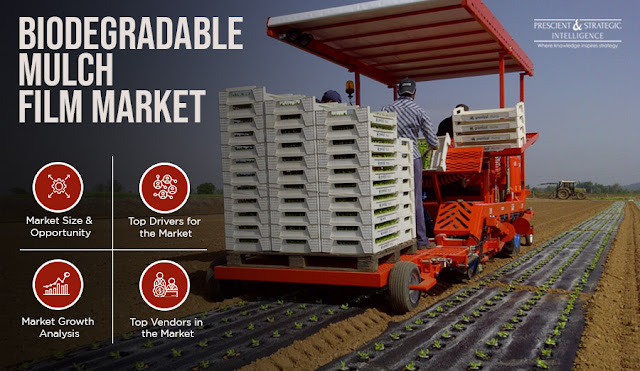
How Are Biodegradable Mulch Films Enhancing Environmental Health?
Biodegradable mulch film is prepared from fermentation wastes and citric acid and is an alternative to traditional plastic film. This film has exceptional degradation and mechanical properties, which help in enhancing the soil quality. The film, based on the combination of polyvinyl alcohol (PVA) polymeric modification and hydrogen peroxide (H2O2) oxidation technologies, is used to mitigate the pollution caused by the fermentation of traditional plastic mulch film and industrial wastes. Moreover, water vapor barrier property of the film also helps in improving soil enzyme activity, soil microbial community structure, and crop yield.
Thus, growing awareness regarding the advantages of biodegradable mulching and adverse effects of inorganic mulching will propel the biodegradable mulch film market at 9.4% CAGR during 2017–2023. According to P&S Intelligence, the market stood at $34,145.1 thousand in 2016 and it is expected to reach $64,039.0 thousand by 2023. Inorganic mulching materials are developed with petroleum-based plastics, primarily non-compostable polyethylene, which has a negative impact on human and environmental health. Whereas, organic mulch film materials are produced from animals and plants, which help in increasing soil fertility without harming the environment.
In recent years, there has been a significant rise in the consumption of starch-based mulch film, due to the low cost and abundant availability of starch. The biodegradable mulch films offer enhanced soil structure, weed control, and reduced soil contamination. Owing to these benefits, farmers are increasingly adopting starch as a raw material to produce mulch films. Moreover, the higher compatibility with various soil types and biodegradability of these films in comparison to polylactic acid (PLA) and polyhydroxyalkanoate (PHA) have fueled their application on agricultural lands.
Globally, the Asia-Pacific biodegradable mulch film market will emerge as the leader in the foreseeable future, on account of escalating population in APAC countries like South Korea, India, and China. Vast population base of these countries will create high demand for food crops, which will require the films in large quantities. Furthermore, the U.S. dominates the North American market, due to its booming population. Whereas, among the Latin America, Middle East, and African nations, Brazil uses the highest volume of organic substances to develop biodegradable mulch films.
Thus, the surging demand for agricultural produce, on account of booming population, is fueling the utilization of biodegradable mulch films, globally.
Comments